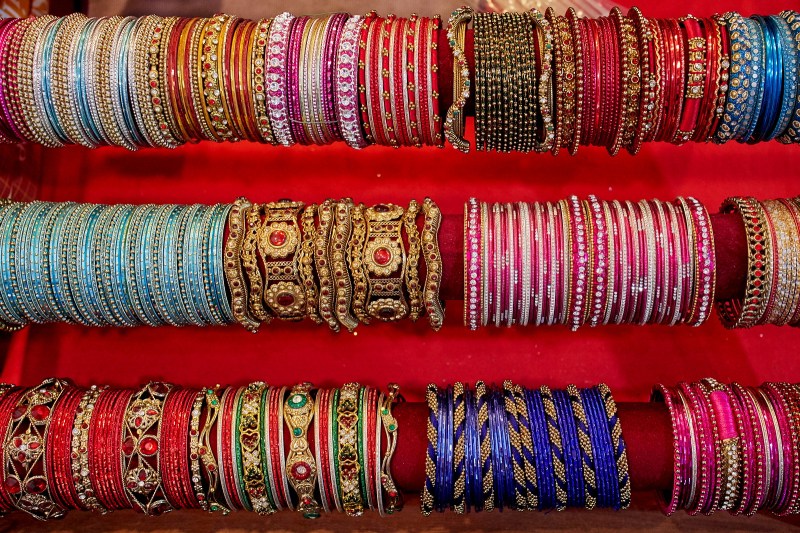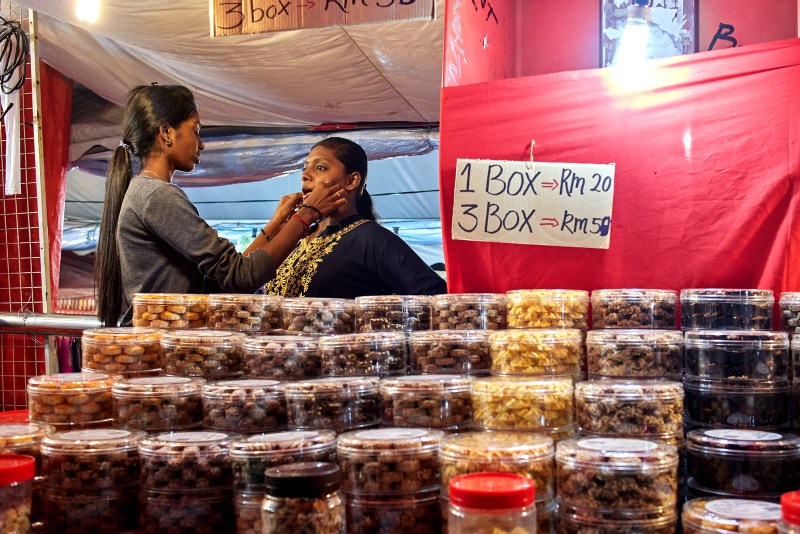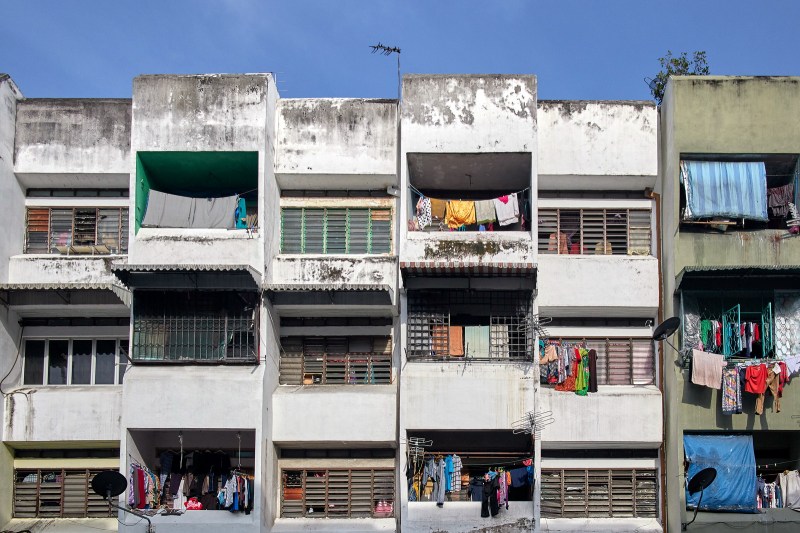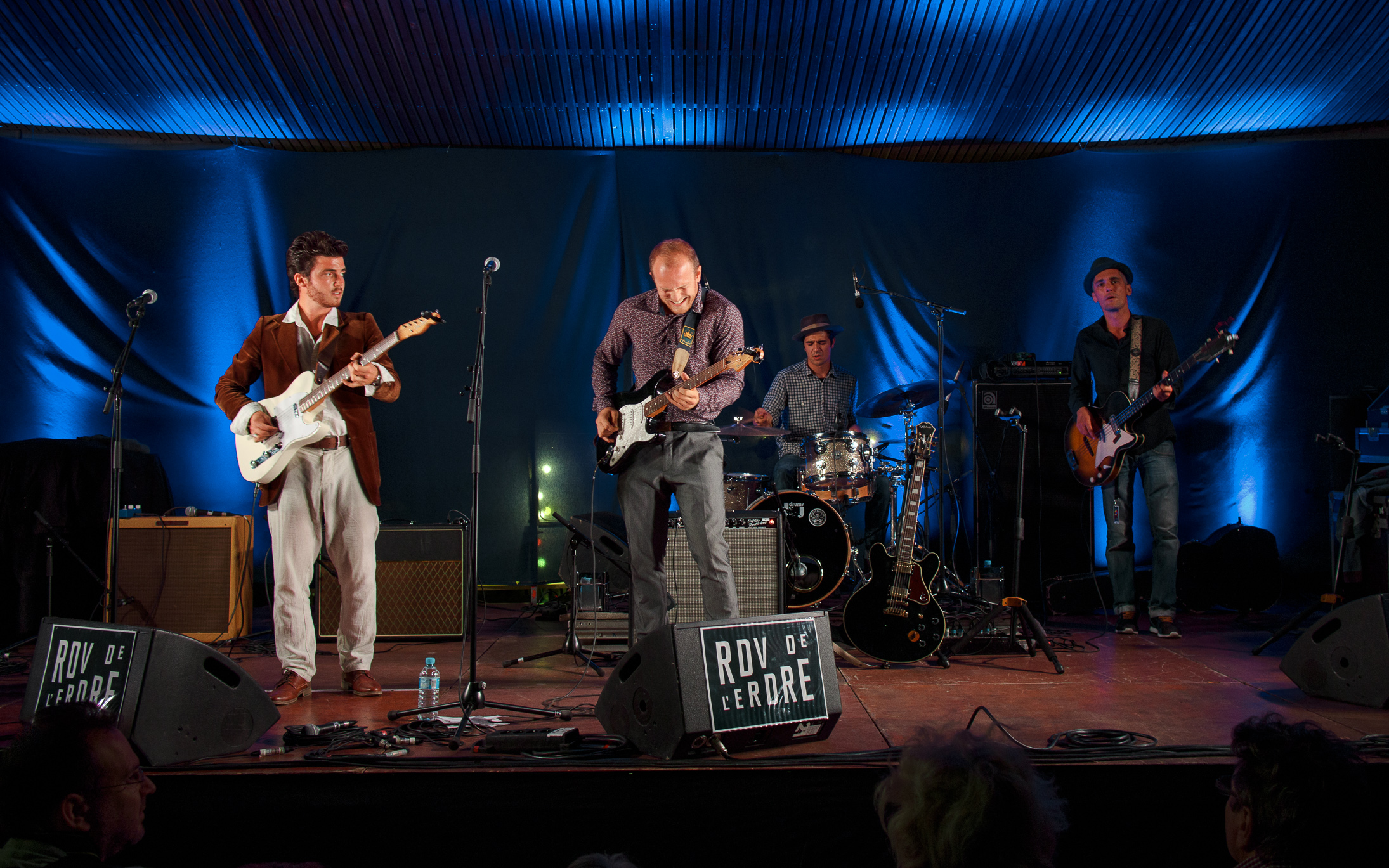Just when I thought my temporary flirtation with the Canon EOS-M6 was over, Canon Malaysia came back to me with the EF-M 22mm F2 STM lens which I was very interested to try out. In my recent review of the Canon EOS-M6, I concluded that it performed well, with the only serious downside being the sub-standard kit lens. Therefore, I was hoping that the 22mm F2 pancake would do justice to what the M6 is truly capable of!
As usual, a little disclaimer – the review of the Canon 22mm F2 lens is independent and based on my personal experience shooting it on the Canon EOS-M6. Both the 22mm lens and the M6 body were on loan from Canon Malaysia. Neither me nor Ming Thein are connected to Canon Malaysia. The loan was strictly for review purposes and these products will be returned after the review.
All images were shot in RAW and post-processed in Capture One Pro version 10.2. Higher resolution images with full EXIF data intact can be viewed at online image gallery here.
The Canon 22mm F2 STM lens has been around for several years now, and I’ve been surprised to find that not many photographers have reviewed it. I have a thing for pancake lenses, I think they fit perfectly in the world of mirrorless cameras. The slim profile of the lens matches the small Canon M6 body, making the combo truly compact. Mirrorless camera manufacturers should produce more good optical quality, affordable and genuinely compact prime pancake lenses!
The 22mm focal length provides an equivalent field of view of 35mm in 35mm terms, which is a versatile, easy to use, and classic focal length. The wide aperture of F2 is respectable considering it is “pancake” in design. The minimum focusing distance is about 0.15m, good for decent close up shots with a maximum 0.21x magnification. The lens weighs almost nothing, at only 105g. The thing that caught my attention most was the affordable price tag, with the lens retailing at about RM1,000 (~ $240) in Malaysia.

Awesome Yana from AbsoluteYana
I was trying to figure out what Canon’s target market for this 22mm pancake lens is, especially on the EOS-M series bodies. Surely one spectrum of target consumers is the social media savvy user, hoping to take their photography to the next level with a better albeit affordable lens on a mirrorless camera body. That means, lots of “Instagram-able” food pictures taken at hipster cafes, never-ending selfies, and the typical OOTD/fashion shots. With that in mind, I stormed out and did just that for the review! Ok, that was a bad joke, but I can totally see how people would buy this lens just for those purposes.
On a more serious note, I was looking for subjects to photograph so that the images would not look too similar to my previous Canon M6 review. Knowing that the lens yields 35mm equivalent field of view, it was almost impossible not to do the usual street photography thing. Luckily, I had the opportunity to shoot a singer-songwriter’s live performance on stage – which I did entirely with the 22mm lens. Also, Deepavali, a celebration that is best translated as the “Festival of lights” was taking place and I went out on the eve to a local hotspot to witness and capture the celebration.

I like how this image is sharp from edge to edge.

Crop from the previous image. Look at the extreme corner, no sign of softness. Impressive!
Based on initial tests of the Canon 22mm lens, I was happy to find that the lens performs well as an all-rounder. There is no noticeable soft corners and the sharpness of the lens was quite good – much better than the kit lens. To my eyes, the sharpness of the lens is quite even from the centre to the edges of the frame. The amount of fine detail captured is also quite good, but to achieve optimum sharpness, it is best to stop down to F4 or F5.6. Wide open at F2, the lens is sharp enough that I find myself shooting wide open most of the time. However, it is worth mentioning that the sharpness is not at the same level as higher grade lenses (Canon L lenses, for example). In bright, outdoor conditions, the images rendered by this lens feature rich contrast and good colour.
Considering the 1.6x crop factor and F2 aperture, I was not able to create as much blur in the background as I would’ve liked, but when it works, the bokeh quality is beautiful and smooth. I was also pleased to find that chromatic aberration is well controlled, and there isn’t a lot of noticeable distortion. This 22mm pancake lens corrects all the technical flaws that the original kit lens suffers from.
The true torture test for the Canon 22mm F2 lens came when I was shooting Bihzhu’s live performance at Shook! at Starhill Gallery, Kuala Lumpur. Before the event, I received a text from Bihzhu, preemptively warning me about the horrible stage lighting. Indeed, the horror was revealed when the show began with the stage light consisting of a saturated mix of purple and pink highlights (I spent considerable time correcting for skin tones). Additionally, the lighting for the stage was so dim compared to the backdrop large LED screen that I was basically shooting into the light for the entire event.
Another challenge, self-inflicted in this case, was that I was stuck with a 35mm equivalent focal length. If you have known me from my old blog, you will know that this is not a comfortable focal length for me to work with. Especially for stage performances, I prefer working with much longer focal lengths for that extra reach and so that I don’t have to be too close to the performers. I guess, not having this flexibility and being stuck with a focal length was not my favourite experience, but I did push myself to get the shots that I needed. I definitely put extra effort for this round of shooting, getting myself as close as I can to the stage, while keeping in mind that I must not stay at one spot for too long for fear of blocking the audience’s view.
The Canon 22mm lens and M6 body combo performed incredibly well for this set. I was amazed by the autofocus capability, nailing crucial shots throughout the show. To my surprise, Bihzhu commented on how much she liked one of my shots! While the stage had horrible lighting, the lens handled the back-light situation well. I did have some misses here and there, and I can tell you that some of those failed shots were entirely my fault (you must understand that this is not my main working camera). There was a surprise birthday celebration for Bihzhu halfway through the show and I managed to react quickly enough, and the M6 + 22mm was capable enough to capture the right moments.
Is that not what a good camera and lens is supposed to do, perform when you need it to, be able to capture the right moment and deliver the shot?

The Canon colour is starting to grow on me.

The close up shooting is also quite good, going in as close as 0.15m.
Deepavali, the festival of lights is a huge celebration in Malaysia. I brought the Canon M6 and 22mm combo out on the streets to witness the Deepavali Eve celebration. Lighting was inconsistent, mostly from street lamps, or fluorescent lights from nearby vendors and stalls. It was dim most of the time, and that was the point of this test, to see how the 22mm handled low light conditions. I shot wide open the entire time with ISO varying between 1600 and 3200.
It was a 4 hour walk along the streets, the atmosphere was vibrant and lively with loud, up-beat music, and a huge crowd busy with last minute shopping for the festival. Having a small and light camera helped a lot. With the tiny pancake lens, it was as if I had nothing on the camera at all, in terms of weight. Being truly mobile and not being weighed down by your equipment is the primary purpose for using a mirrorless system after all. It was a joy using such a small camera and lens combo.
My only complaint from this experience, was having to constantly watch my shutter speed. Coming from having a reliable image stabilization system all the time, I was used to handling extremely slow shutter speeds and still getting away with reasonably sharp images. This was not the case for this set of images as even at 1/50 shutter speed, there was plenty of blur in my shots due to hand shake. Yes, I admit, this was probably my fault for not having a steadier hand-holding technique but I wish the lens or camera had some sort of image stabilization, which would help keep the ISO numbers low.

One of the blink and you miss it moment, and the 22mm pancake lens on M6 managed to nail this.
Image stabilization aside, I don’t think there is anything bad to write about the Canon 22mm F2 lens. My experience has been positive with consistent sharpness from corner to corner, good control of optical flaws, minimal chromatic aberration and negligible barrel distortion. Autofocus was quick and reliable enough that I managed to capture critical moments. The 35mm effective field of view provides an easy to use, versatile focal length for everyday use and is a must for street photographers. The 22mm lens features a superbly slim and compact profile that creates a truly small and light mirrorless system for Canon.
I can confidently say, that for Canon EOS-M users, the Canon 22mm F2 STM pancake lens is a must have in your camera bag. This is a no-brainer upgrade from the kit lens, giving you improved results and a better shooting experience. Canon should make more lenses like this for different focal lengths, maybe an equivalent 24mm F2.8, and also a 50mm F2 pancake?
__________________
We are also on Facebook and there is a curated reader Flickr pool.
Images and content copyright Robin Wong 2017 onwards. All rights reserved























I’ve been using the Canon M100 and EF-M 22 mm lens for about 6 months and find it to be an excellent combination in terms of image quality, size and overall portability. So small I take it with me to work every day and free time as well. Really like being able to take a photo, upload to my phone, edit in Adobe PS Express then post to social right away. Highly recommended!
I am considering a canon pancake lens. I have read about the m22/2 and the 40mm/2.8. I am primarily interested in street photography and in particular people at work. Which lens would you recommend? I really like your photos which are along the lines of what I want to do.
Yep. I love that lens. I have the little M2 camera and also one of the Fuji X cameras. Thanks to the close focusing distance of the EF-M 22mm f2 lens, it’s a lot more versatile than say the Fuji 35mm f2… in fact, due to that one detail you can fill the frame with the object you are photographing a lot more with the Canon 22mm.
I really like the M6 and M100 compactness. I think it’s silly to add an adapter since I’m already trying to go for smaller compact cameras… I hope they release an EF-M 17-50mm f2.8 or something of that sort. I plan to already get the 22mm f2!
Hai. I am from Indonesia and I just bought the M6 with 15-45mm. Im thinking of changing the kit lens to 22mm f2.
Do you think that’s a good idea ?
Nice lens – now the EOS-M series just needs a couple of more primes: 35mm f1.8 + 55mm f1.8 then I am in 🙂
There are a few good lenses in the range, but there seems to be a change in thinking in that all new lenses have plastic bayonet mounts. Possibly it suggests Canon are now aiming lower with the M series APS-C mirrorless system, and the quality products will come when the FF mirrorless eventually appears?
Thanks for your good report on this lens!
( When the prices of the EOS-M fell, I found a used one with the 22mm.
The M has its limits, but Magical Lantern gives it overexposure zebras, focus peaking, auto ETTR exposure and other stuff.)
I also want a couple of longer compact lenses.
In the meantime I’m quite happy with the compact 40mm f/2.8 (recommended by Ming) + adapter.
Good stuff, Robin! I hope Canon Malaysia will lend you the new Canon G1X MKIII and have fun with it.
That G1x Mark III does seem like something worth trying out for!
And one more basic question. How do you rate this Canon quality wise with good lens like this one against Olympus cameras? ISO for ISO, especially high ones.
In terms of sharpness and technical flaw control (CA, distortion, etc), against the 17mm F1.8 (lets just compare equivalent focal lengths), the 17mm fares better in all aspects. However, truth to be told, I have enjoyed the Canon lens better. I like the look of the images (characteristics) of the Canon 22mm, and it just feels right! Sometimes, perfection is not everything.
What about sensors say M5II against M6?
For some reasons, I find the old Olympus 16MP sensors to be as good, if not even slightly better than the Canon. Then again, Olympus does have better lenses that can resolve better fine details. I did not see much advantage of the 24MP vs 16MP, and high ISO performance was almost equal.
Nice seeing you review other gear, Robin.
I just would like to correct the statement: “In terms of sharpness and technical flaw control (CA, distortion, etc), against the 17mm F1.8 (lets just compare equivalent focal lengths), the 17mm fares better in all aspects”.
This statement is not true. The Canon 22mm has much better distortion control. In fact, Photozone.de (now opticallimits.com) was highly impressed by its native lack of distortion: 0.0293% vs -4.54% for the Olympus 17mm. After software correction the Oly is still worse at -0.538%.
In terms of resolution, the Canon is sharper than the Oly at any aperture and everywhere except in the extreme corners wide-open. Finally, the Canon has better CA control than the Olympus. You can compare the measurements for yourself here: http://www.opticallimits.com/m43/840-olympus17f18?start=1 and http://www.opticallimits.com/canon-eos/960-canon_m22_2?start=1.
You may choose to use what these websites concluded based on their tests, but I have done my own shooting enough to come up with my own answers. Of course, you may also disagree with me, that is perfectly fine. Side by side, I have witnessed significantly better sharpness, better distortion and CA control from the Olympus lens.
Yes, now that you have mentioned, it is probably due to the in camera processing. As I used Olympus Viewer 3 to optimize my files. Did you also take into account that newer Olympus processing engines such as Truepic 8 in the E-M1 Mark II has also improved the technical optimizations of the lens?
Also, some points worth noting. The Optical tests you referred to were done on a 2011 camera body, Panasonic Lumix GX1. The tests have not been updated for use with Olympus native body (which does embed some correction and optimizations, even into the RAW files). I personally have seen almost zero distortion and CA when the lens was used on Olympus body. I have enough experience with Olympus cameras to claim this. I do not work for them anymore and I am not really defending them. But in all honesty, I still maintain that I have enjoyed the Canon lens more than Olympus. That itself is a good praise for Canon.
Photozone.de is one of the most respected and highly esteemed reviewing site. However, they compare camera + lenses combo using Adobe ACR. I suppose Olympus viewer 3 might give better results in certain areas (such as CA correction). This being said, I’m a bit more doubtful about resolution given this is not something that can be improved by software.
Another thing is sample variation. Perhaps your sample of the Oly 17mm is above average and the Canon 22mm is below average? Anyway, I just wanted to point to these measurements. It’s not that important and not very relevant to must users.
You guys do such great work! Both of you! Thanks for sharing.
Thanks!
Off topic, but perhaps you might answer anyway. I just re-read your test of the Olympus f/1.8 25mm lens on your personal blog and noticed a number of shots made at 1000th or 2000th of a second. Do you disable the Olympus IBIS at and above some specific shutter speed? I’ve wondered whether the IBIS may, in effect, work against itself at higher speeds and introduce a bit of softness because of motion blur — motion of the sensor in this case.
Very nice results with the Canon and its 22mm lens. I can see a difference in the color of straight JPEGs as processed by Canon, but it’s in no way unattractive. Could be Canon is well on its way to a really competitive mirrorless system.
Thanks Michael! When I was shooting with the Olympus 25mm F1.8 lens, I have enabled the IS at all times. I saw no issues with higher shutter speeds, as I often shoot in the outdoor, under tropical Malaysian sun.
Thom Hogan ( http://sansmirror.com ) writes in his review on the E-M1 Mark II :
“… and (2) at very high shutter speeds, the IS system can rob a bit of acuity from edges.
Thus my rule of thumb: from 1/60 to 1/1000 I’ll leave the IS on. Below 1/60 and I start considering whether there’s subject motion that is problematic (can be addressed with things like flash as the light source). Above 1/1000 I turn it off for the slight boost in acuity.”
But he doesn’t say if he has seen the effect or just is careful…
( PS. And, of course, the IBIS has evolved over time. )
I strongly disagree. Below 1/60 second shutter speed is the situation when the 5-Axis IS from Olympus shines. I struggled using the Canon with the absence of the 5-Axis IS. With the claim of high shutter speed affecting the image quality when using with IS, honestly, I have shot so many images at such high shutter speeds I have never seen any issues so far.
Sorry if I made the quote to short.
He makes no complaint of the IBIS at slow shutter speeds, he is only concerned about freezing subject motion.
As to fast shutter speeds, I guess he is just playing it unnecessarily safe, perhaps with memories from older IBIS systems?
Hi Robin.. I’m a newbie in this mirrorless things.. do you have any advice with what camera should i buy? I’m thinking about getting this Canon Eos m6 or Olympus omd 10 mrk III, both camera looks so good but I don’t know which one better for the beginner like me.. so please help
I’ve been shooting with only the original EOSM and 22mm f2 since 2014 when I paid $300 for the whole package.. Great little kit. Gallery with this kit http://www.pbase.com/dennislaska/eosm
thanks for sharing the gallery! A testament to what the tiny 22mm pancake is capable of.
Thanks. You have one of the best sites for serious photogs and one I trust the most!
Beautiful. Superb colors 😀
Thanks a lot for this review. This 22mm is my “lens to go” since last April now, and I must say I really love it.

As you said, it can give excellent results all the way around, though I agree it would have been perfect with IS.
I had the chance to use it with M6 for concert shots, and though I had some good results, I must say that many shots were blurry (especially when holding the camera up over the crowd). Anyway, I loved the shots I had.
Thanks again to give us a “real world” advice, they are becoming rare (though not on this site).
That was a splendid shot, and I envy your stage lighting! Glad that you have found the lens to be useful and it worked for your shooting!
Thank you.
To be true, the lighting was well placed indeed but was quite orange/reddish or some kind of. Though, it was good enough so that I can have it right from the raw afterward. That is explaining partially the “exaggerated” blue background. Anyway Canon’s colors allow to get this balanced quite handily.
Thanks for sharing your thoughts on the lens. I used it years ago when I bought the first Canon mirrorless in a firesale. Due do abysmal autofocus speed of the whole system and a few other issues I sold the lens and camera soon after, but I have fond memories of the image quality and the compactness. There was one issue with the lens though and I am a little surprised you did not mention it: vignetting. It was very visible wide open and did not go away fully after stopping down. Obviously, it is easy to remove but if you shoot wide open with high ISO the corners suffer. Still an excellent lens considering all. I am pleased that AF speed is now decent with the new bodies.
I did not find the vignetting to be a serious problem. I noticed a bit of it when I was shooting at F2, but I think maybe the newer cameras have some sort of software correction? It was definitely nothing worth mentioning from the tests that I did.
I remember strong vignetting, something like 1.5 EV wide open. Easy to correct in post-processing, but not terrific at very high ISO. At the time I shot on the much older Canon sensor, of course, so on the newer ones the noise in the corners even at high ISO may be less visible. Perhaps Canon has even included some in-camera processing that affects RAW, although that seems unlikely to me. Either way, I still liked the lens a lot and if it isn’t really an issue in shooting now that’s good. It makes for a versatile and light combo!
As far as I know, for Olympus cameras, there is an option in the menu to enable correction for vignetting. It can be turned on or off. This has been available even before the Micro Four Thirds era, during the Four Thirds DSLR time. I’d expect something as simple as to be compensated easily by the camera or software.
Just when we thought they’d gone as far as possible, and there’s nothing new left to invent or develop !!!! 🙂
Robin, I think it does all of us good, to be stuck with a fixed focus lens that is not our normal choice. It makes us scratch our heads, think, and try harder.
And the stunning results that you’ve produced with it show that that’s not such a bad idea, after all. Take a bow, and thank Canon Malaysia for giving the opportunity to try it.
You are too kind! Yes, I appreciate all opportunities to try out different hardware, even if it is not something I use often, or at all.